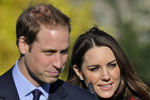Society
Strange life signs found on meteorites
Updated: 2011-03-07 10:28
(Agencies)
WASHINGTON - A NASA scientist reports detecting tiny fossilized bacteria on three meteorites, and maintains these microscopic life forms are not native to Earth.
The study, published online late Friday in The Journal of Cosmology, is considered so controversial it is accompanied by a statement from the journal's editor seeking other scientific comment, which is to be published starting on Monday.
The central claim of the study by astrobiologist Richard Hoover is that there is evidence of microfossils similar to cyanobacteria - blue-green algae, also known as pond scum - on the freshly fractured inner surfaces of three meteorites.
These microscopic structures had lots of carbon, a marker for Earth-type life, and almost no nitrogen, Hoover said in a telephone interview on Sunday.
Nitrogen can also be a sign of Earthly life, but the lack of it only means that whatever nitrogen was in these structures has decomposed out into a gaseous form long ago, Hoover said.
"We have known for a long time that there were very interesting biomarkers in carbonaceous meteorites and the detection of structures that are very similar ... to known terrestrial cyanobacteria is interesting in that it indicates that life is not restricted to the planet Earth," Hoover said.
Hoover, based at NASA's Marshall Space Flight Center in Alabama, has specialized in the study of microscopic lifeforms that survive extreme environments such as glaciers, permafrost and geysers.
He is not the first to claim discovery of microscopic life from other worlds.
In 1996, NASA scientists presented research indicating a 4-billion-year-old meteorite found in Antarctica carried evidence of fossilized microbial life from Mars.
The initial discovery of the so-called Mars meteorite was greeted with acclaim and the rock unveiled at a standing room-only briefing at NASA headquarters in Washington.
Since then, however, criticism has surrounded that discovery and conclusive proof has been elusive.
Hoover's research may well meet the same fate. In a statement published with the online paper, the Journal of Cosmology's editor in chief, Rudy Schild, said in a statement:
"Dr. Richard Hoover is a highly respected scientist and astrobiologist with a prestigious record of accomplishment at NASA. Given the controversial nature of his discovery, we have invited 100 experts and have issued a general invitation to over 5,000 scientists from the scientific community to review the paper and to offer their critical analysis."
E-paper

Sindberg leaves lasting legacy
China commemorates Danish hero's courage during Nanjing Massacres.
Crystal Clear
No more tears
Road to the Oscars
Specials

NPC & CPPCC sessions
Lawmakers and political advisers gather in Beijing to discuss major issues.

Sentimental journey
Prince William and Kate Middleton returned to the place where they met and fell in love.

Rent your own island
Zhejiang Province charts plans to lease coastal islands for private investments




